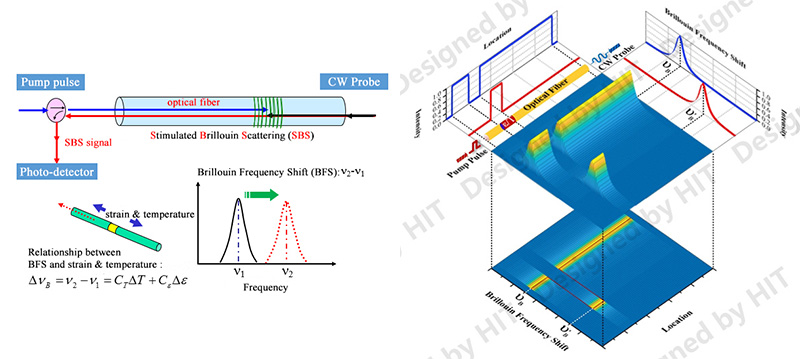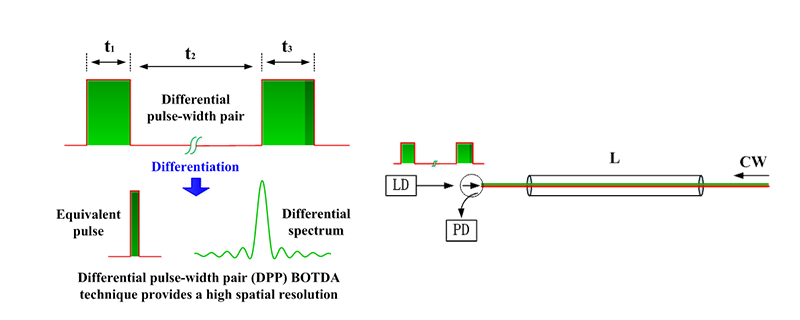
Brillouin Optical Time-Domain Analysis
BOTDA employs two counter-propagating lasers, i.e., a pump pulse and a CW probe wave, and the Brillouin gain spectra (BGS) of the sensing optical fiber can be obtained by scanning the frequency offset between the pump pulse and the probe wave in the vicinity of the Brillouin frequency shift (BFS). According to the linear relationship between Brillouin frequency shift and optical fiber strain and temperature, the distribution of strain and temperature along the sensing optical fiber can be obtained by measured Brillouin frequency shift.
The advantages of BOTDA technology are as follows: 1. Strong signal, i.e. high signal-to-noise ratio, 2. Long sensing distance, 3. High spatial resolution, 4. High measurement accuracy.

Differential pulse pair technology
The differential pulse pair technology is an innovative method which can significantly improve the spatial resolution of a BOTDA system. This technology has to be applied in two steps. Firstly, two time traces of the Brillouin gain signal over the same section of an sensing optical fiber are obtained by using two pulses with different pulse widths respectively. Secondly, differential Brillouin spectra are obtained by taking subtraction between the two traces of Brillouin signals and the corresponding temperature or strain can be obtained by demodulating the differential Brillouin spectra.
Concretely, two pump pulses with width of t1 and t3 successively input into the optical fiber with length of L in a time interval t2 (>2nL/c). The injected pump pulse pair interact with the counter-propagating continuous wave laser and the Brillouin signals corresponding to the two pulse are received by the detector separately. Then subtraction was conducted to the two Brillouin signals to obtain the differential gain signal. Additionally, Brillouin gain spectra of each position along the optical fiber can be obtained by sweeping the frequency offset in the vicinity of the Brillouin frequency shift (BFS), and BFS of each sensing point is obtained by the curve fitting. Finally, the temperature or strain distribution of the optical fiber can be demodulated according to their relations to the frequency shift.
The advantages of differential pulse pair technology can be summarized in the following three aspects 1. Strong Brillouin signal with high signal-to-noise ratio, 2. Brillouingain spectrum with narrow linewidth, 3. Long sensing distance with high spatial resolution and high precision sensing.